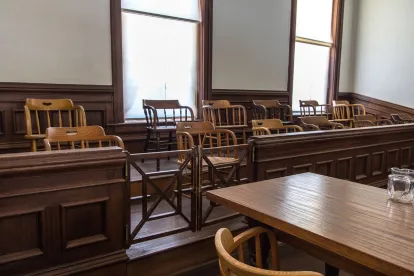As a national trial consulting firm, we are often asked to assist with jury selection in jurisdictions where lead counsel has been admitted pro hac vice and may not be closely familiar with the standards and procedures for jury selection in the trial jurisdiction. Although local counsel can be a great resource for obtaining more information about jurisdictional rules and individual judges’ preferences, there is also a wealth of information available in online publications to help you prepare for what to expect in most trial venues.
Rules of Civil Procedure
The vast majority of states outline their procedures for jury selection, including standards for hardship and cause, within their Rules (or Codes) of Civil Procedure. These days, many states post their statutory Rules of Civil Procedure directly on the court’s website. It may take a little fishing, but a search for the “[State] Rules of Civil Procedure” on any major search engine will often yield a link directly to the table of contents, where you can then locate the sections pertaining to jury selection.
For example, California’s Code of Civil Procedure Sections 190-237 on Trial Jury Selection and Management provides detailed guidance to judges and attorneys regarding juror questionnaires, mini-openings, breadth and scope of voir dire, and the processes and standards for exercising challenges, among other things. Though less detailed than California, Virginia’s standards and procedures are also online. As another example, the Louisiana Legislature posts its Code of Civil Procedure online, with the procedures and standards for jury selection beginning with Article 1751.
Of course, this information can also be obtained through subscription services like Westlaw and LexisNexis, but if you need to access the statutory language quickly from a tablet or cell phone in court, it is wise not to discount these shortcuts.
Handbooks and Articles
Other valuable resources for trial attorneys include handbooks and articles that summarize the pertinent information. These handbooks are sometimes published by the courts themselves, such as New York’s Implementing New York’s Civil Voir Dire Laws and Rules. This 32-page handbook is especially helpful since, in this jurisdiction, voir dire and jury selection is conducted almost entirely outside the judge’s presence and there are bound to be disagreements between the parties. The handbook is written in common vernacular and includes a helpful table of contents for quick reference, along with citations (and corresponding links) to supporting statutory language from the New York Civil Practice Laws and Rules.
Many bar associations also publish articles that summarize the applicable statutes, as well as the subsequent case law, that further define the scope of voir dire in these jurisdictions. For example, this article on the law of jury selection in Missouri state courts, published in the Journal of the Missouri Bar, discusses limits that the court has imposed on the scope and manner of jury selection, including the incorporation of jury instructions, previewing case facts, seeking commitments and rehabilitation—to name a few. It also includes a lengthy explanation of how the courts deal with juror non-disclosure in this jurisdiction.
While we always recommend that counsel review and Shepardize or KeyCite any case law they find in articles such as these, they can be a valuable first step in identifying the important rulings that may be at issue during jury selection in any given jurisdiction.
Incorporate Cause Standard into Voir Dire Questions
Some of the most important pieces of information to know in advance of voir dire are the court’s standards for securing cause challenges. While each judge may have their own “magic words,” incorporating the statutory language into your cause sequence and rehabilitation efforts can be a powerful tool for gaining an edge over opposing counsel.
For example, knowing whether the statute references words such as “fair,” “impartial,” “bias,” “unequivocal,” “assurance,” or “leaning” should guide the language you use when questioning the jurors. Then, when cause challenges are argued before the judge, we advise counsel to first cite the statutory language, followed by the quotes from jurors that mirror such language. While this is not a fool-proof technique—judges can always exercise their discretion—it will be difficult for any judge to deny a challenge that directly reflects the legal standard.
Similarly, if opposing counsel fails to get jurors to echo the statutory language, you can argue that they have failed to meet the requisite cause standards, increasing the odds that their challenges will be denied.
Prepare for Jury Selection
We recommend researching the applicable rules or code in advance of jury selection and printing them, so they are readily available to cite or hand over to the judge when appropriate. It is also helpful to know your judge’s procedures for jury selection. (Some important questions to ask local counsel can be found in this article.)
Though most jury consultants are not lawyers, selecting a jury consultant with experience in your trial jurisdiction is an important consideration. Your consultant may be able to help you prepare for jury selection by identifying what information you will need to gather in advance and helping you find it quickly.




 />i
/>i

